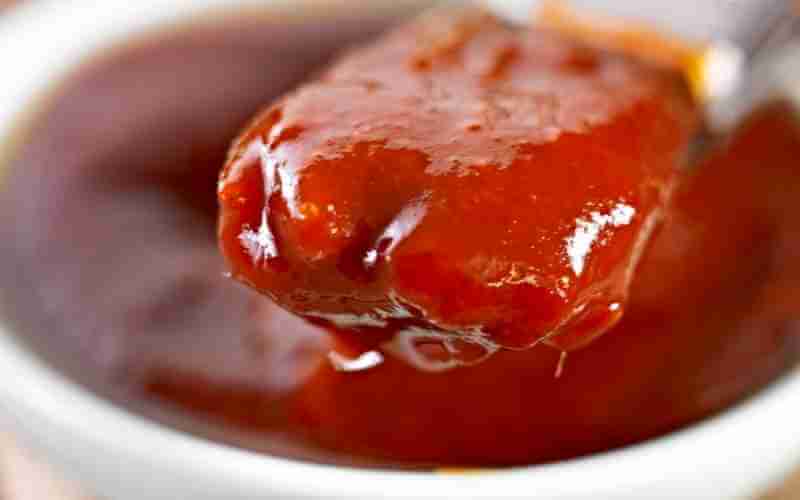A sauce with an excessive amount of sweetness, even if it is meant to have a sweet flavor, will ruin the sauce’s balance and ruin the sauce’s flavor. Besides that, the quality will be lowered, and the flavors of the other ingredients will be completely overwhelmed.
Reducing the sauce’s sweetness may be the best option because a sweet sauce may not appeal to everyone.
A tried-and-true way on how to neutralize sauce sweetness is to add more ingredients and some vinegar to the mix.
Nevertheless, let us explore other options in greater detail to help you neutralize your sauce’s sweetness.
Contents
How To Neutralize Sweetness In Sauce.

Methods commonly used to neutralize sauce sweetness.
1. Adding salt
Naturally, salt reduces the sweetness of food. If the sauce already contains a significant amount of salt, you must take special care to avoid oversalting it further and double the recipe.
Add a bit here and there to see if the flavor you’re going for can be achieved. Soy sauce and other salty condiments can be substituted for salt if you don’t have any on hand.
You can fix an over-salted sauce by adding water or salt-free stock, extra meat, and vegetables.
2. Incorporating water or broth into the mix
Adding water would lessen the sauce’s sugar content. Your sauce’s flavor and consistency would be affected, as well as its constituents and wateriness if you were to do this. When making your sauce, consider using broth instead of water.
This method is not recommended to reduce sauce sweetness, especially if you want your sauce to have a particular consistency or if you want it to be thicker.
3. Utilizing a more significant proportion of the essential component
The easiest way to reduce the sweetness in the sauce is to add more ingredients to the mix. Increase the amount of vegetables, meat, or tomatoes used. Do not season the vegetables before adding them to the sauce, saute them.
You have the option of doubling the number of your primary components. The sauce won’t be as sweet as it was before if you do it this way.
The other option is to set aside half of your sauce, return to it, and add the other half of the ingredients you started with.
Adding additional seasoning would still be necessary, but this method ensures that you have the correct amount of sauce at the beginning. You can use the other half at some point in the future.
4. A sauce that isn’t as sweet can be added to the mix.
It’s possible to make a less sweet sauce and combine it with the already sweet one. Blending the two sauces results in a more flavorful sauce overall. As the volume of your sauce increases, you’ll need to figure out what to do with any extra or leftovers.
5. Introduce Acidic substances
An acidic component is the most efficient way to bring sweetness and savoriness in your sauce into harmony. The acid reduces the sweetness of food in general. You could flavor your sauce with a squeeze of fresh lemon juice.
Adding a slight tartness to your sauce will bring out the flavors of the other ingredients and give your dish a more authentic flavor. Lime juice can be used in place of lemon juice as an alternative.
Sauces can also benefit from vinegar’s tangy flavor. It will enhance the flavor of your sauce while also reducing its sweetness. There are different kinds of vinegar in the market, but you should steer clear of balsamic vinegar, which is particularly sweet.
Acidic ingredients should be added while the sauce is still simmering.
6. Adding products such as milk and cheese
For savory sauces, in particular, the addition of dairy products may result in a reduction in sauce sweetness. You can choose yogurt, milk, or cheese as a dairy ingredient.
If you’re going to use yogurt in a recipe, make sure to use Greek or sour cream. It makes the sauce’s sweetness more bearable for you. Be careful not to overcook your yogurt by putting it in too early.
It would be best to use a cheese with a strong flavor and a distinct bite, such as parmesan cheese, to get the best result. Before serving, stir in the cheese to prevent it from curdling and making the sauce lumpy.
It’s best to use fattier milk if you’re going to drink it. Your milk should be sugar-free, and you must ensure that it is thoroughly incorporated into the sauce while it is still hot.
If you are lactose intolerant, coconut milk is an excellent alternative.
7. Adding Spicy, flavorful ingredient
A sauce that has already been overly sweetened can benefit from adding spice, which not only helps to counteract the sweetness but also enhances the sauce’s flavor. You should gradually increase the amount of your spice until you achieve the flavor profile you desire.
Chili powder, cayenne peppers, and chili flakes are just some spices you could use.
It may be necessary to add additional spices and flavorings to achieve a more harmoniously balanced flavor. As a result, the volume of your sauce will grow, and you will end up with more sauce than you intended.
8. Introduce Bitter substances
To counteract the sweetness of a sweet sauce, sometimes it can be challenging to add bitter ingredients like kale or arugula without making the dish bitter
Unsweetened cocoa powder is the most practical way to add a hint of bitterness to your sauce. It still has the same amount of sweetener, but it can help make the sauce taste less sweet. The sauce would have a chocolate flavor if you used too much cocoa powder.
9. Adding Mushroom.
Umami is a taste that is less well-known than the other four tastes, which are sweet, bitter, salty, and sour. The umami flavor of mushrooms can be found. An earthy flavor is imparted, and the sweetness or saltiness of the sauce is tamed by using it in the recipe.
The addition of cooked mushrooms would not only reduce the sauce’s sweetness, but it would also give it a more earthy and natural flavor.
Read: How Long Will Homemade Tomato Sauce Last in The Fridge?
Frequently Asked Questions
Why is my sauce too sweet?
It’s human nature to make errors. It’s possible that you over-sugared your sauce while making it, resulting in an overpowering sweetness. Because of a measurement error, the sauce you made may have been too sweet.
Sometimes, the sweetness of your tomatoes overpowers the rest of the flavors in your sauce. The sweetness of your sauce is directly related to the ripeness of your tomatoes.
What spice can I use to reduce the sauce’s sweetness?
Chilli powder, chili flakes, and regular pepper are some of the best spices you can use to reduce the sauce’s sweetness. During the cooking process, don’t be afraid to taste your sauce. As a precaution, be sure to accurately measure your ingredients.
Read: Do You Need To Refrigerate Tomato Sauce After Opening?
Conclusion.
Cooking sauce can go wrong on some occasions. When the sweetness of your sauce becomes too much for you. The sauce can be made less sweet in various ways, some of which are described above.
With these tips, you should be able to know how to neutralize sweetness in sauce. You no longer have to worry about throwing away or making extra sauce if it becomes too sweet.
You are strongly advised not to exceed the amount of sweetener specified in the recipe.
Good luck.
.
